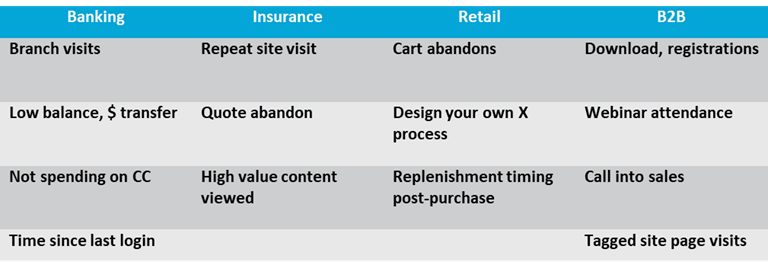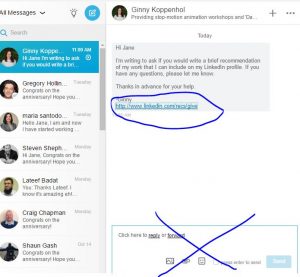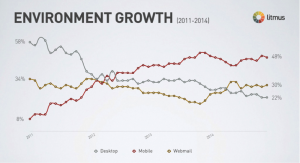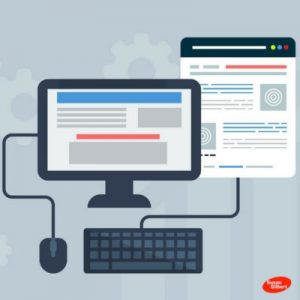You may associate behaviorally triggered emails with e-commerce, but contributor Jose Cebrian explains scenarios that work for financial services, B2B, healthcare, travel and entertainment.

In the world of marketing, there are three main types of campaigns.
The most common is the planned marketing campaign: A company decides the messages and offers it wants to put out into the market. Pretty straightforward.
The next type of campaign is the life cycle campaign: You send a predetermined set of messages based on where a person is in a buying cycle, regardless of his or her behavior. In a perfect world, these are automated, but they don’t have to be.
A simple example of this is a publisher sending a welcome stream after someone subscribes and then, as a subscription nears its end, ramping marketing back up to drive a renewal. The common thread between these two campaigns is that the company is driving the message.
The third type of campaign is one driven by behavioral triggers. These differ in that the marketing messages are designed to directly respond to or use the information a consumer provides by their behavior. Think action on a website that shows interest in something.
Going beyond e-commerce
These types of campaigns can have very high ROI. Behavioral triggers using email tend to be considered the domain of e-commerce because abandoned cart campaigns are such a successful tactic. I have seen behavioral triggers account for 20 percent of an e-commerce website. Additionally, B2B marketing has used behavioral triggers for years, taking into account site actions, including product page visits and content downloads, as a means to drive further messaging.
The beauty of behavioral triggers (and the key to their high ROI) is pretty simple. As with search, the actions people take on your site can be inferred as intent. Site actions signal intent the same way keywords do. The difference is that they are on your site — they are closer to conversion than in a search.
Depending on your business and industry, your definition of a conversion will be different. A conversion can be a direct sale online, an event signup that moves people along a sales funnel, an app download or even a signup asking to be contacted via email, SMS, push or in-app. The point is that you are using the prospect or customer’s own behavior to drive the messaging.
Cart abandons are the classic case. Someone puts something into their online cart and leaves the site. You have display retargeting, and a cart abandon email is sent to drive the purchase. But not everyone has a classic cart. The same principles work for banking, insurance, pharma, media, travel and so on. The trick is to identify the key actions a person takes or pages they visit and trigger messages to drive the desired action based on your inference about their intent.
Here are some examples:

As a person takes a series of actions, you will need to decide which actions or combination of actions mean the most and use that information to trigger the messaging. But remember, you don’t have to trigger a single message because of that action. You can reference that action in other communications, and you can save the data about those actions over time to build a better model on that individual to be used in further segmentation.
Try to use a single platform
Triggers are commonly implemented in email to support site actions. That is great, and they are successful. But I find it troubling that a whole group of companies has sprung up to provide this feature/use case primarily. They make it easy and affordable, which is a definite win. The issue is that when you are using one of these companies, it almost by definition means you are using a different marketing cloud/ESP for the other email you’re sending.
I think it is a miss if your marketing cloud/ESP doesn’t provide this functionality, especially if it’s one of the big ones. When you use two different platforms to send email, there are two key problems that come up. The first is that you are double-paying, which doesn’t necessarily make sense. The second is that you have two platforms holding this data and handling opt-outs. A mitigating scenario, in which the trigger platform makes an API call to the primary email platform, is a good middle ground. Tracking can also be an issue if you need to look at reporting in two platforms.
Conclusion
In summary, behavioral triggers can be an important part of any marketing program, not just e-commerce. Your prospects and customers are giving you signals all the time, both online and offline. You will need to define the actions that mean the most to you and determine when to message those people and what the message will be.
But remember that you don’t have to send a message right away or even have a dedicated message. You can store those signals over time to create a better picture of that customer or prospect and use that information to better personalize your other communications.
Opinions expressed in this article are those of the guest author and not necessarily Marketing Land. Staff authors are listed here.
Marketing Land – Internet Marketing News, Strategies & Tips
(21)
Report Post








